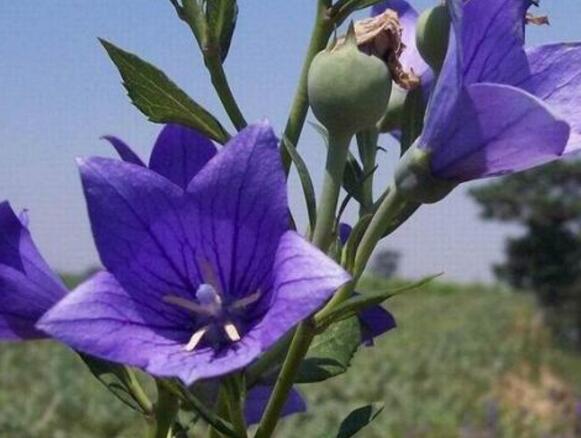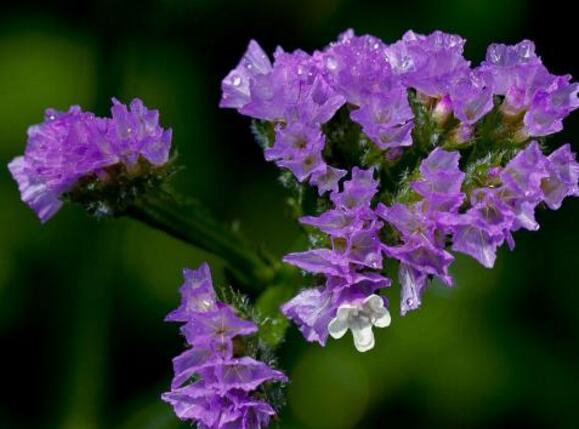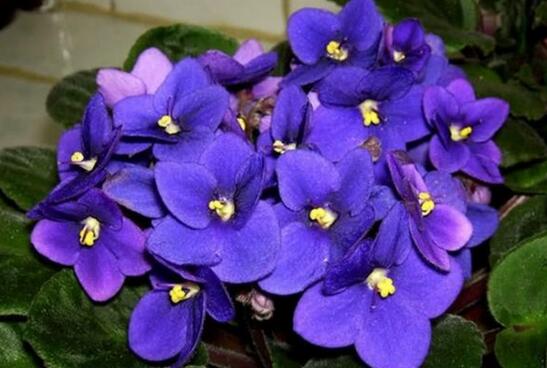How to reproduce Platycodon grandiflorum? the reproduction method / sowing reproduction of Platycodon grandiflorum has a high survival rate.
Platycodon grandiflorum is a kind of flower with high ornamental value, and many people will choose to raise this plant at home, so people are more concerned about its reproduction method. About Platycodon grandiflorum how to reproduce, what are the breeding methods of Platycodon grandiflorum? Next, the editor will take you to learn about it.
How to propagate / sow and reproduce Platycodon grandiflorum

About how to reproduce Platycodon grandiflorum, the most common method is to sow and reproduce, and the survival rate of this method is relatively high. The breeding method of Platycodon grandiflorum is described in detail below, which can be seen by interested friends.
2. Propagation methods of Platycodon grandiflorum
Sowing and reproduction
1. Sowing time
In order to sow and reproduce Platycodon grandiflorum, it is very important to choose a suitable time. Generally, spring and autumn are the most suitable for Platycodon grandiflorum growth, so it is best to sow and reproduce at this time, and the survival rate will be greatly improved.
two。 Seed selection
In the breeding methods of Platycodon grandiflorum, the selection of seeds is a more important part. Generally, it is necessary to choose non-mature seeds for more than 2 years, so that the germination rate will be higher, and the seeds need to be soaked in warm water before sowing, the time is generally about 8-12 hours.
3. Soil selection
After selecting the seeds, we have to choose the soil, we can choose the humus soil with high looseness, garden soil and fine sand mixed soil, so that the drainage will be better, and the seeds can better absorb nutrients.
4. Sowing method
After the preparatory work has been done, we can sow seeds. When sowing, we should first flatten the basin soil, then sow the seeds and fine sand on the soil surface, and after sowing, cover it with soil around 2cm, and then we can water it. When watering, it is best to use a spray can to keep the soil moist. After doing this, you can basically sprout after sitting for a week or so.
5. Subsequent management
After Platycodon grandiflorum sprouted, we can maintain it. You can refer to the cultivation method of Platycodon grandiflorum, in which there is detailed teaching, and the editor will not introduce it too much here.
How to propagate Platycodon grandiflorum, the propagation method / sowing / cutting of Platycodon grandiflorum
Platycodon grandiflorum is a common plant in people's life, which is highly ornamental, and there are many people who breed it in our country, so people are more concerned about how to breed Platycodon grandiflorum. What are the breeding methods of Platycodon grandiflorum? Next, the editor will take you to learn about it.
1. How to propagate / sow / cut Platycodon grandiflorum
On the question of how to reproduce Platycodon grandiflorum, it can be roughly divided into two types: sowing reproduction and cutting propagation. As long as the methods are mastered, the survival rate of these two propagation methods is relatively high. Below, there is a detailed explanation of the reproduction methods of Platycodon grandiflorum. Let's take a look.
2. Propagation methods of Platycodon grandiflorum
Sowing and reproduction
1. Soil selection
Among the breeding methods of Platycodon grandiflorum, sowing reproduction is a relatively simple one. In sowing and reproduction, we first need to choose soil, we can choose soil with better looseness, so that the drainage will be better, it will be more conducive to Platycodon grandiflorum to absorb nutrients.
two。 Sowing method
After the soil is selected, we should first disinfect the soil so as not to carry germs in it. After the disinfection is completed, we can sow the seeds evenly on the soil surface, then cover them with a layer of soil about 2cm, and then pour water and stand for 15 days or so.
3. Subsequent management
After sprouting, we can carry out normal maintenance, specific maintenance methods you can refer to the culture methods of Platycodon grandiflorum, in which there are detailed teaching, here the editor will not introduce them one by one.
Cuttage propagation
1. Select cuttings
When selecting cuttings, we can choose branches with stronger growth, so that the survival rate of cuttings will be relatively higher. And after the selection of cuttings, some pruning is needed, which can generally reduce the general leaves on the branches, which can reduce the consumption of nutrients.
two。 Select matrix
After selecting the cuttings, we need to choose the substrate, we can choose the slightly alkaline substrate, and after selection, we also need to use carbendazim to disinfect the substrate, which can prevent the growth of the virus.
3. Cutting method
After the preparatory work is done, we can carry out cutting. we can first cut a small hole in the matrix with chopsticks, then cut the cuttings and then flatten the substrate and pour it into water. generally, it will take 3-4 weeks to take root. after rooting and sprouting, we can carry out normal maintenance.
The cultivation method of Platycodon grandiflorum, how does Platycodon grandiflorum reproduce?
Platycodon grandiflorum likes cool climate, cold resistance and sunshine. It is suitable to be cultivated in the hilly area below 1100m above sea level and in semi-sunny sandy loam, the neutral sandy soil rich in phosphorus and potassium fertilizer grows better, and the seed life is 1 year, and stored at low temperature can prolong the seed life. The germination rate of 0-4 ℃ dry storage seeds was 3.5-4 times higher than that of normal temperature storage for 18 months. The seed germination rate is 70%, the temperature is 18-25 ℃, there is enough temperature, and the seedlings will emerge 15 days after sowing.
Platycodon grandiflorum, alias Baodang flower, bell clang flower, monarch flower, is a perennial herb, stem 20-120 cm high, usually glabrous, occasionally densely shortly hairy, unbranched, rarely branched. Leaves all whorled, some whorled to all alternate, sessile or with very short stalks, leaf blade ovate, ovate-elliptic to lanceolate, leaves ovate or ovate-lanceolate, flowers dark blue or dark purplish white.
Planting method of Platycodon grandiflorum
1. Soil selection
Platycodon grandiflorum likes the growth environment of warm and humid, sunny and abundant rainfall. Platycodon grandiflorum does not require high climatic environment, but the soil is better in sandy loam with deep soil layer, fertile soil, good drainage and rich humus. Platycodon grandiflorum likes cool and humid environment, and most wild Platycodon grandiflorum flowers grow in sunny slopes and grass, so it is not suitable to grow Platycodon grandiflorum in low-lying and flooded areas.
2. Disease and pest control
The common diseases and insect pests of Platycodon grandiflorum are root rot, aphids, red spiders and so on. When the root rot of Platycodon grandiflorum occurs, the diseased leaves are covered with ash powder, which seriously leads to the wilt of the whole plant. The prevention and control method is to spray with Baomei 0.3 degree stone sulfur mixture or Baifenjing liquid at the beginning of the disease or with 1800 times solution of 20% vermiculent powder. If Platycodon grandiflorum is attacked by aphids or red spiders, 40% dimethoate emulsion 1500-2000 times or 80% dichlorvos emulsion 1500 times can be sprayed every 10 days.
3. Fertilizer and water management
The peak growing season of Platycodon grandiflorum is from June to September. Topdressing should be applied in late June and July according to the growth situation of Platycodon grandiflorum. Fertilizer is mainly human and animal manure, combined with a small amount of phosphate fertilizer and urea. Watering during drought, Rain Water should pay attention to drainage when abundant, Platycodon grandiflorum is easy to rot roots, need to prevent soil stagnant water. The florescence of Platycodon grandiflorum is as long as 4 months, and picking flowers can increase the yield.
Propagation methods of Platycodon grandiflorum
1. Variety
In the plots where Platycodon grandiflorum was cultivated, a small amount of white flower Platycodon grandiflorum appeared, which had stable heredity and high yield. However, the contents of saponins and amino acids and hemolysis were lower than those of Platycodon grandiflorum. The pharmacological properties of the two kinds of Platycodon grandiflorum saponins are exactly the same. There is a fast-growing southern type of Platycodon grandiflorum in purple flower Platycodon grandiflorum and a kind of yellow flower Platycodon grandiflorum in Tonghua, Jilin Province.
2. Land selection and preparation
Choose sunny sloping land with deep soil layer or flat land with good drainage. Deep ploughing 30-40 cm, combined with the application of base fertilizer, fine broken soil, leveling, to make a bed 1.3-1.7 meters wide.
⑴ seed treatment
Soaking seeds in warm water for 24 hours or soaking seeds with 0.3% potassium permanganate for 12 hours can increase the germination rate.
⑵ sowing date
Autumn sowing, winter sowing and spring sowing are all available, and autumn sowing is the best. Autumn sowing produces seedlings in the same year and the growing period is long, and the fruiting rate and root diameter are significantly higher than those of spring sowing in the following year.
⑶ sowing method
Generally use direct seeding, can also raise seedlings transplanting direct seeding yield is higher than transplanting, and the quality is good. Strip broadcasting is often used in production. On the border, open the horizontal ditch according to the center distance of 20-25 cm, with a depth of 4-7 cm, sowing width of 10 cm, and cover small ash after sowing. 500-750 grams of seeds per mu for direct seeding and 250-350 grams per mu for seedlings. In addition, tissue culture can also be used to come back and breed.
Field management technology
⑴ inter-seedling and supplementary seedling
When the seedling height is 2 cm, the seedling is thinned properly, when the seedling height is 3-4 cm, the seedling is fixed, and 1 strong seedling is retained with 10-13 cm. Replenishing seedlings and inter-seedlings are carried out at the same time, the seedlings with soil are easy to survive.
⑵ ploughing and weeding
Weeding 3 times, the first time when the seedling height is 7-10 cm, the second time after a month, and the third time after a month.
⑶ topping
When the seedling height is 10 cm, leave the planting plant to top to increase the number of seeds and the plumpness of seeds, and increase the seed yield.
Topdressing and soil cultivation with ⑷
When the seedling height is 1-2 cm, the application of light human and animal dung water per mu is 1000 kg, and when the seedling height is 6-7 cm, 10 kg calcium superphosphate per mu is applied in the ditch, and then 1200 kg of light human and animal manure water is applied to the cave and cultivate the soil. In the following spring, when the seedlings were 6-7 cm high and before flowering, 1500 kg of human and animal feces and 5 kg of urea were applied per mu.
⑸ flower removal
Platycodon grandiflorum has a long flowering period, flowers and fruits grow and develop, consume a lot of nutrients, remove flowers and fruits, reduce nutrient consumption and make more assimilates stored in the roots, which is an effective measure to increase yield.
The efficacy of Platycodon grandiflorum
① releases lungs and expels phlegm
Platycodon grandiflorum powder bitter diarrhea, open lung qi, expectorant and pharynx, is an important drug for the treatment of lung meridian disease. It can be used to treat cough with more phlegm, regardless of cold and heat.
② pharynx
Platycodon grandiflorum can release the lungs and relieve heat. It can treat hoarseness with pharynx, pharynx, dysphagia, sore throat, heat toxin and other diseases.
③ purulent
Platycodon grandiflorum powder ascending, can benefit lung qi to discharge pus sputum, can be used to treat lung carbuncle cough chest pain, sputum fishy smell and so on.
④ can defecate.
Platycodon grandiflorum can be used in the treatment of constipation and constipation.
The function of Platycodon grandiflorum
① anti-inflammation
Platycodon grandiflorum saponins have strong anti-inflammatory effects on acute and chronic inflammation. Platycodon grandiflorum has no obvious anti-inflammatory effect, but its water extract can enhance the phagocytosis of macrophages, enhance the bactericidal activity of neutrophils and increase the activity of lysozyme.
② expectorant and antitussive
The saponins contained in Platycodon grandiflorum can stimulate gastric mucosa, cause mild nausea, reflex cause increased secretion of bronchial glands, dilute sputum, and play the role of expectorant.
③ lowers blood pressure
Platycodon grandiflorum crude saponins can reduce blood pressure, slow down heart rate and inhibit respiration.
④ hypoglycemia
The water and alcohol extracts of Platycodon grandiflorum have hypoglycemic effect. In addition, Platycodon grandiflorum has the effects of diuresis and detumescence, anti-allergy and anti-tumor.
What is the flower language of Platycodon grandiflorum?
1. Hopeless love.
2. Eternal love; sincerity, meekness, sadness.
- Prev

Forget-me-not how to reproduce, forget-me-not reproduction method / sowing / planting / net fixing
Forget-me-not is a common flower in people's life, and it is cultivated in the homes of many plant lovers in our country, so many people are more concerned about its reproduction. About how to reproduce forget-me-not, what are the breeding methods of forget-me-not? Next, the editor will take you to learn about it.
- Next

How to reproduce violets, the method of propagation / sowing and flowering of violets is better
Because violets have so many effects and functions, some people hope to keep them all the time. At this time, it involves the question of reproduction. How can violets reproduce scientifically? At present, there are two mainstream propagation methods of violets, which are sowing and cutting.
Related
- Fuxing push coffee new agricultural production and marketing class: lack of small-scale processing plants
- Jujube rice field leisure farm deep ploughing Yilan for five years to create a space for organic food and play
- Nongyu Farm-A trial of organic papaya for brave women with advanced technology
- Four points for attention in the prevention and control of diseases and insect pests of edible fungi
- How to add nutrient solution to Edible Fungi
- Is there any good way to control edible fungus mites?
- Open Inoculation Technology of Edible Fungi
- Is there any clever way to use fertilizer for edible fungus in winter?
- What agents are used to kill the pathogens of edible fungi in the mushroom shed?
- Rapid drying of Edible Fungi

